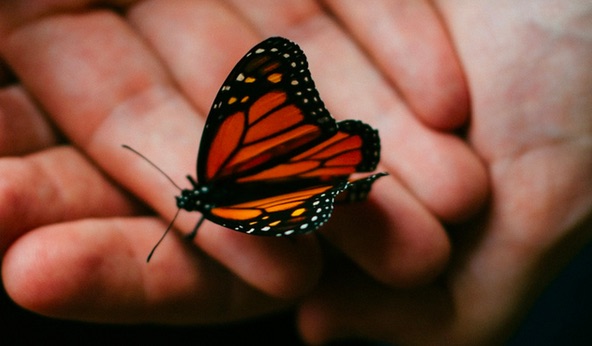Why Our Economy Should Be Like A Butterfly
Sometimes it’s necessary to take a step back and look at the bigger picture.
I’ve given many examples of how I believe our market is overvalued today. From Porsches to Tesla and from the housing market to the stock market… everything seems expensive!
(Well… maybe there are some things that are cheap. Like uranium, silver, platinum, and Colombian real estate.)
So, I want to show you an example of why our economy is like a butterfly.
This example is mostly an answer to:
Is it possible for there to be so much capital in the world economy that it drives up asset prices across the board in excess of any reasonable expected return on them?
The answer is YES.

This is exactly what is happening in our world.
It’s caused by two things:
#1 Money printing.
#2 Low-interest rates.
Money printing, which is more eloquently called “quantitative easing” in the US, has been an actual policy that has been implemented.
And it’s not just the US. Other countries are doing it as well.
The idea with money printing is that it injects extra capital into a struggling market. This extra capital stimulates industries to get them back on their feet.
Once these industries recover, the government and/or central bank stops printing money and allows the economy to plug along as it normally should.
The same idea applies to artificially lowered interest rates.
The government and/or central bank lowers rates to stimulate lending. With lower rates, consumers are more likely to take on debt because it costs less to borrow money. With this borrowed money businesses are built and products are purchased, which eventually stimulates the economy.
Once the economy is back on its feet, the government and/or central bank raises rates.
But, there is a problem with both of these strategies – money printing and low rates.
The best way to illustrate this problem is to think of a butterfly.
A butterfly starts out as a caterpillar and eventually finds a nice branch to form a cocoon. While inside the cocoon, the caterpillar goes through metamorphosis and eventually transforms into a butterfly.

When the butterfly emerges from the cocoon, it needs to squeeze out of its shell-like enclosure. This process of the butterfly emerging pushes fluids out through the butterfly’s wings and allows its wings to properly unfold.
Now, if a human was to interject in this process, and tear open the cocoon for the butterfly, then its wings wouldn’t unfold properly.
Of course, the butterfly would have a much easier time of getting out of the cocoon, but without wings that can fly, the butterfly is doomed for eventual death.

If we think of our economy like a butterfly, then we can see that money printing and artificially low rates are similar to a human helping the butterfly out of the cocoon.
Economies need hard times that ‘shake out’ the bad businesses.
Today, there are many businesses that are operating that should not be. These businesses have gotten government loans, special tax incentives, and general special treatment with the idea that eventually they will contribute to the larger economy.
But guess what? The best businesses overcome obstacles on their own without any major help. The businesses who get extra help might have a flawed model – that’s why they need the help. Eventually, these businesses who aren’t able to succeed on their own will fail.
Now, if you think about his idea, you can see that a business that fails when it’s bigger is much more dangerous than a business that fails when it’s smaller.
For example, if the flower shop in your hometown had to close its doors, the global economy is not going to notice anything. But, if a company that has been borrowing billions of dollars at artificially low rates and employees thousands of workers goes under… well, then there are much bigger problems.
All of this is basically kicking the can down the road. Eventually, these issues will need to be addressed, but the longer we put them off by injecting capital into our markets, then the worse the eventual correction will be.
This is a major issue to be aware of, because this bubble of extra capital is affecting all parts of our globe. But, if we see it coming and know how to react, then we can be just as successful in the hard times as in the good.



